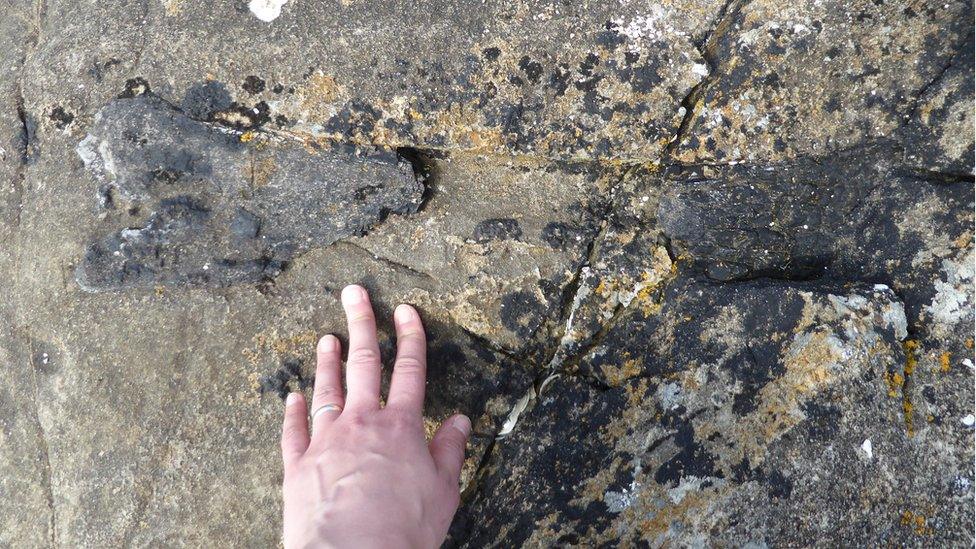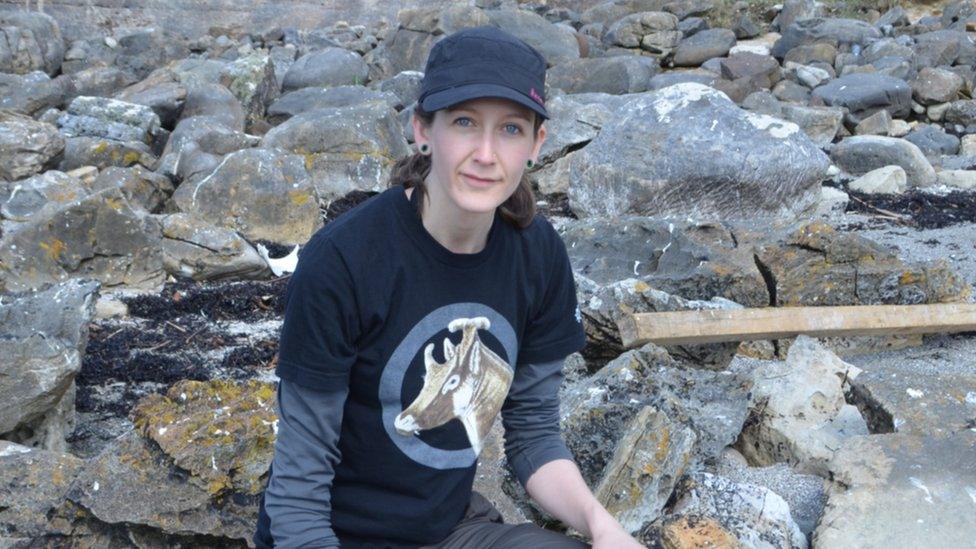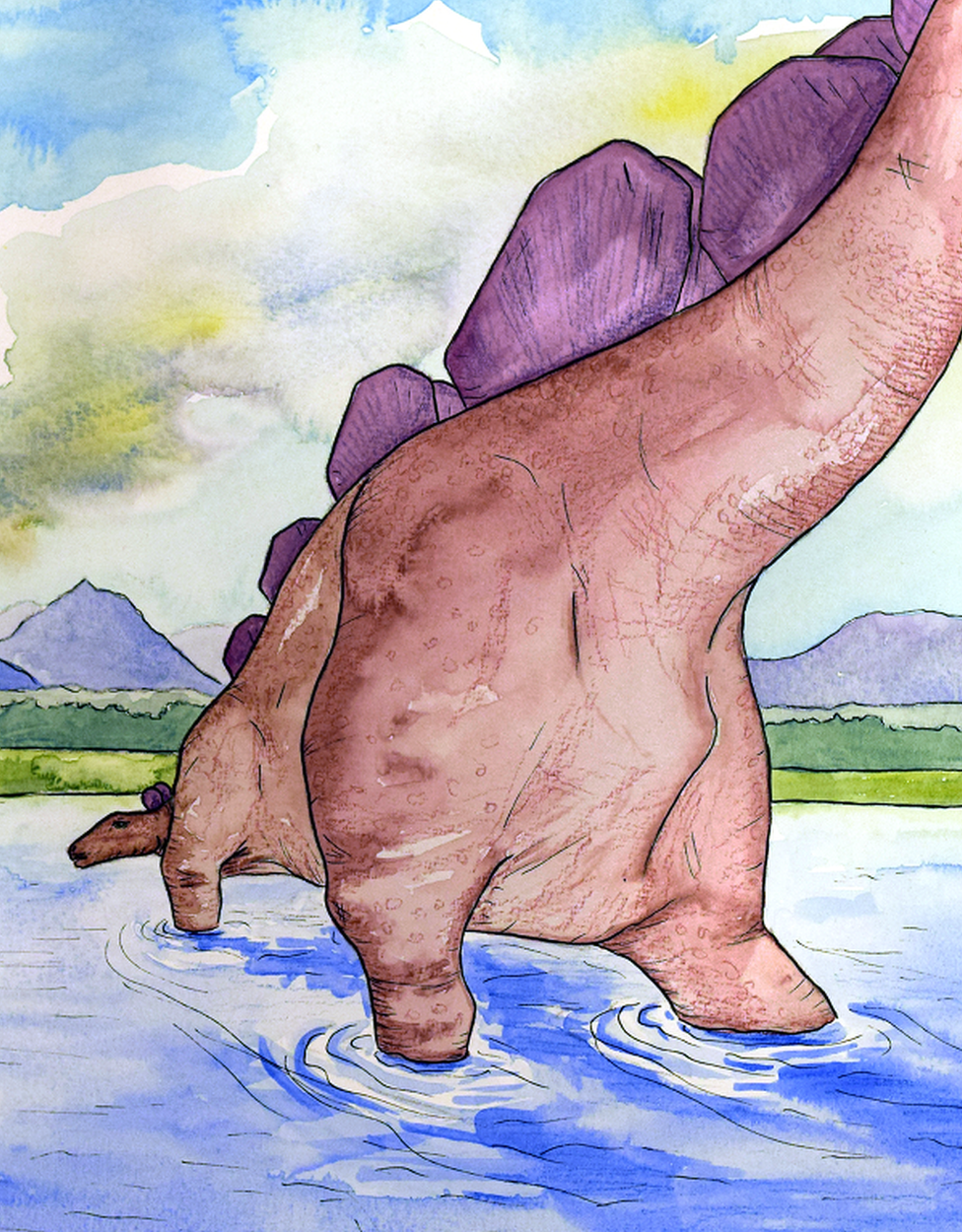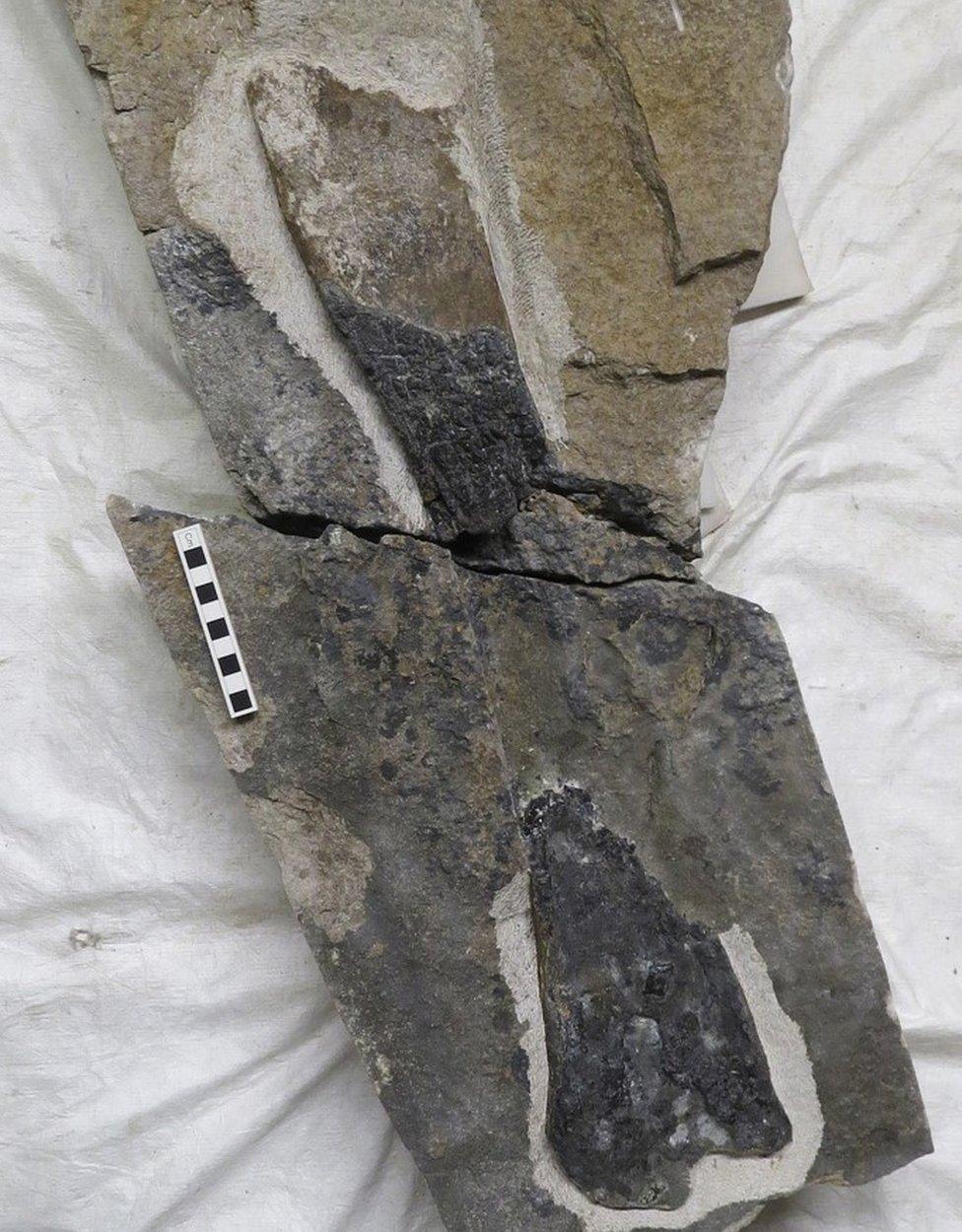Eigg beach runner stumbles on dinosaur bone
- Published

The fossil was found in rock on the shoreline of Eigg
A scientist has discovered a 166 million-year-old dinosaur fossil while running along the shore of a small Scottish island.
Dr Elsa Panciroli was running to meet up with her palaeontology research team on Eigg when she made the discovery.
In Scotland, dinosaur bone fossils had only previously been found on the Isle of Skye.
The limb bone is about 50cm (19in) long and thought to belong to a stegosaurian dinosaur, like the stegosaurus.
Scientists have been searching for dinosaur fossils on the island for about 200 years. Previously the only fossils found on Eigg were of marine reptiles and fish.
Dr Panciroli said the research team was looking for these fossils and had not expected to find evidence of a dinosaur.
Her discovery has been dated to the Middle Jurassic period.

Dr Elsa Panciroli made the chance discovery
Dr Panciroli, who works at National Museums Scotland, said: "It was a bit of a serendipitous discovery.
"It was the near the end of the day and I was running to catch up with the rest of the members of the team, who were quite far away.
"I realised I had run over something that didn't look right. It wasn't clear exactly what kind of animal it belonged to at the time, but there was no doubt it was a dinosaur bone."

Dr Panciroli's illustration of what the dinosaur looked like

She said it was "hugely significant" find, adding: "Globally, Middle Jurassic fossils are rare and until now the only dinosaur fossils found in Scotland were on the Isle of Skye.
"This bone is 166 million years old and provides us with evidence that stegosaurs were living in Scotland at this time."

The fossil is now in a museum in Edinburgh
Dr Steve Brusatte, a palaeontologist at the University of Edinburgh, said: "Elsa's discovery of this bone is really remarkable.
"This fossil is additional evidence that plate-backed stegosaurs used to roam Scotland, which corroborates footprints from the Isle of Skye that we identified as being made by a stegosaur."
The bone is now in the collections of National Museums Scotland in Edinburgh.